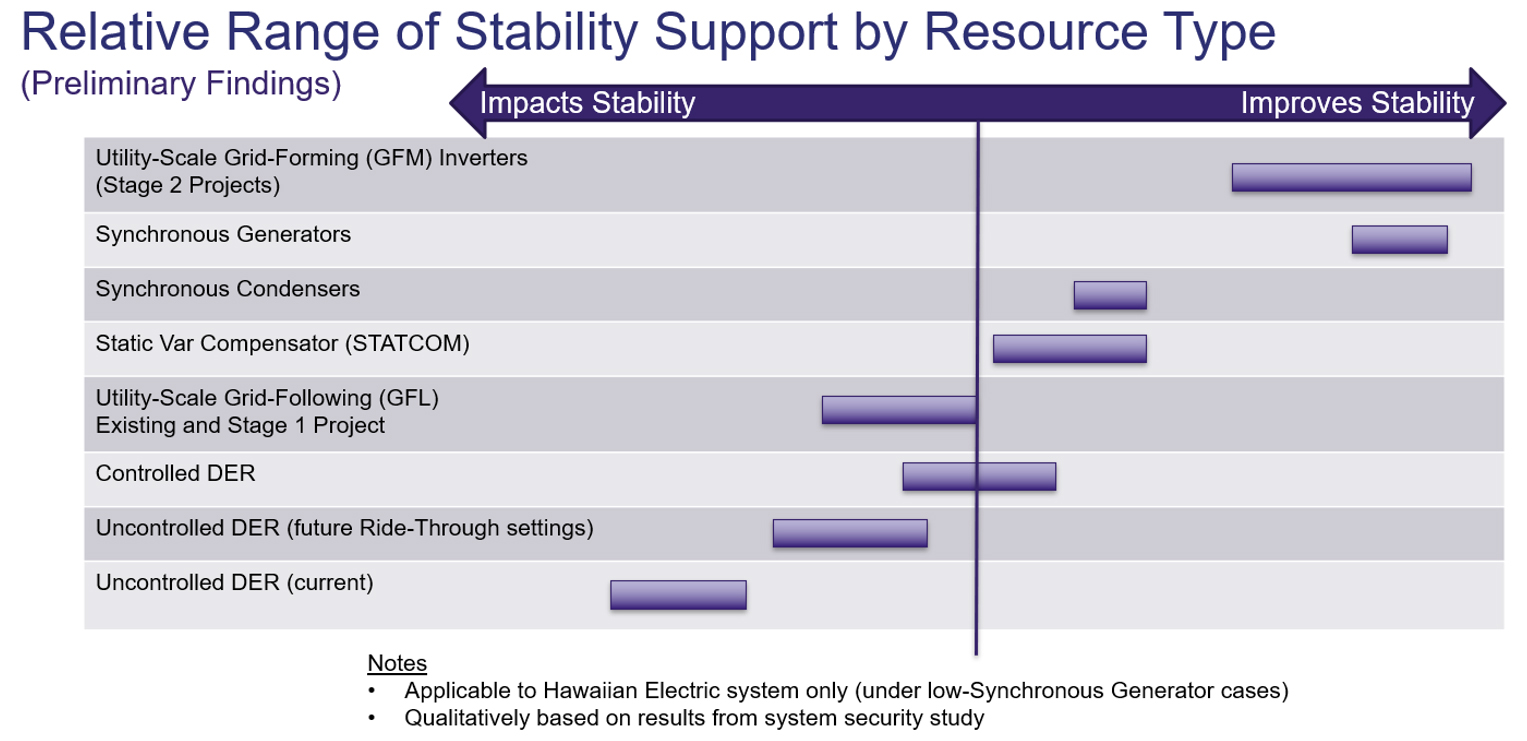Finding ways to scale up distributed energy resources (DERs) in addition to utility-scale renewable resources is imperative to meet our decarbonized vision. Many know that Hawaiian Electric’s system already has a high penetration of DERs, and we continue to lead the nation in developing solutions to manage the continual increase.

Ken Aramaki
To meet our 2030 climate goals, Hawaiian Electric needs to increase DERs (particularly rooftop solar) by 50 percent by 2030, which amounts to ~1.5 GW total on a system that currently has 2.3 GW of firm capacity. Those in the industry know there are technical challenges and many unknowns as we continue to push these penetration levels. These goals keep it exciting and challenging for planning engineers to analyze issues, identify barriers, and determine solutions to enable implementation at this scale.
But while this situation is exciting, we must not ignore the technical realities, which often tend to get lost in the conversation. Our challenges may not be seen by most utilities for years to come; however, we offer the following findings that may help others identify and navigate future issues.
The DERs That We Have Today Must Evolve to Support the Grid of the Future
Hawaiian Electric’s system will increase its reliance on DERs for the foreseeable future. At high penetrations, we have found characteristics that are unique to DER performance and must be addressed to enable reliable integration:
• Momentary cessation undervoltage limits (during which inverters cease to operate)
• Rate of change of frequency (ROCOF) ride-through limits (during which inverters trip)
• Wide-scale deployment of DERs reducing the effectiveness of underfrequency loadshedding (UFLS) schemes utilizing distribution circuits (loss of contributions of DERs to maintaining stability)
In times of a grid contingency, Hawaiian Electric’s low inertia system may incur voltages well under 0.5 p.u. and/or ROCOF greater than 3 Hz/s during system events, which are the current IEEE 1547-2018 performance requirements for DERs. During these system events, we count on all generating resources to support system stability. However, the current standards will not be sufficient for Hawaiian Electric’s future low inertia grid. Existing standards will allow DERs to trip off, which will then trigger UFLS on circuits with DERs—further reducing the DERs’ ability to respond to the outage.
The table below shows the relative range of how different resources impact stability for the future Hawaiian Electric system. Current DER performance is shown to have the most impact on system stability. The addition of utility-scale grid-forming plants will help; however, with the increased deployment of both utility-scale and distributed inverter-based resources, we will continue to experience a reduction in the contribution to stability from synchronous machines.
 Source: Hawaiian Electric
Source: Hawaiian Electric
So What Are We Going to Do About It?
For one, with a high penetration of DERs already on the system, we need to better understand their performance and more accurately model their response in our studies. We are working with our national lab partners to test inverters to improve our understanding of DER dynamics and calibrate our models.
For future DERs, we will be working with manufacturers to see how far the ride-through settings can be pushed. We are finding that the momentary cessation undervoltage limit should change from 0.5 p.u. to below 0.2 p.u., and ROCOF should also be changed from 3 Hz/s to 6+ Hz/s. Further, we will be looking at ways to improve UFLS, either by deploying a dynamic UFLS scheme and/or by utilizing other demand-side resources such as electric vehicle infrastructure to temporarily decrease load during these grid contingencies. The high-IBR, low-inertia system of the future will continue to get “faster”; being able to understand how resources interact within the transient time domain will be key to figuring out solutions and planning the grid of the future. Our work on this is far from over and will require continued collaboration across the industry to develop solutions to improve DERs’ support to the system.
Ken Aramaki
Director, T&D and Interconnection Planning
Hawaiian Electric Company

Excellent summary Ken.
Great article @Ken Aramaki, agree 100% all these variable renewable resources come with environmental and economic benefits. But IBRs being different from traditional power plant technology they can impact the reliability of the bulk power grid. As the penetration levels of IBRs increase and the technology of IBRs evolves it could potentially change the very nature of the grid’s dynamic performance as their sizes and numbers grow. Whether this helps or harms future electric system reliability depends on the choices we make today.
I was wondering if you are exploring the possibility of including Battery Energy Storage System (BESS) to be part of DERs. As BESS is getting popular as a reliable resource to mitigate intermittency of renewable energy and it can also help optimal utilization of available resources.